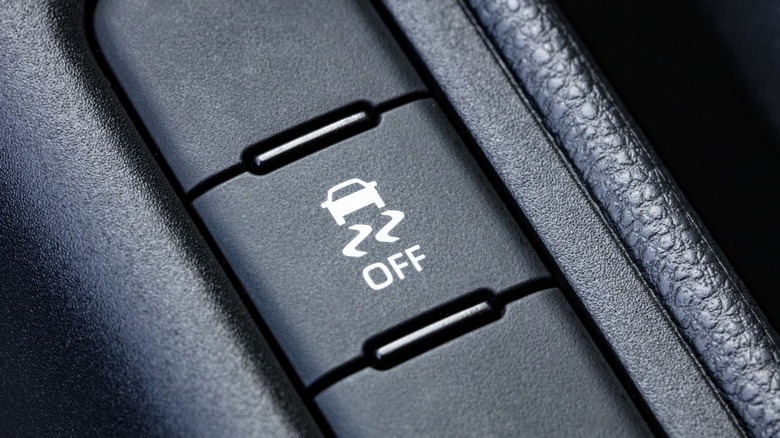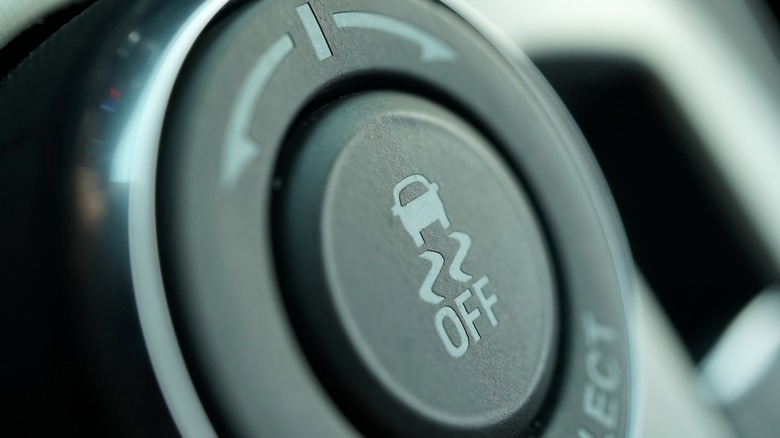What Is Traction Control, And Should You Ever Turn It Off?
You'd be forgiven if years of goading from Top Gear co-host Jeremy Clarkson made you think you should be turning off your car's traction control to have the most fun behind the wheel, but that isn't necessarily the case. While the first-gen versions may have been on the clunky side, since traction control's mandated implementation in new cars in 2012, the technology has come a long way. Yes, there are instances where your car's traction control system is slowing you down, but that is very much the point. Coming out of corners on a wet surface or accelerating when things are slippery can result in the car suddenly cutting your throttle, to, as the name suggests, control traction. Despite what hot rodders tell you, the function's primary purpose is safety, and it can and does prevent accidents.
Traction control is even used in some racecar models because, as the saying goes (referring to tires), "spinnin' ain't winning." With how evolved modern driving tech is, there's a good chance that turning your traction control off could hinder you whether you're driving on snowy roads or trying to set a personal best at the race track. Let's take a look at what traction control is and in what instances you might consider turning it off.
What is traction control and how does it work?
Traction control is a system that constantly monitors how much your wheels are spinning relative to one another, and regulates the one(s) in free spin. So, if you're driving on a slippery surface in cold conditions and your wheel start to achieve higher RPMs than the others, the traction control system limits the wheel spin to give you the best shot at gaining traction. This can be useful in a myriad of situations. Perhaps the most applicable use for traction control is when driving through a corner on a slippery surface. If your car starts to slide and your wheels spin freely as your engine revs to the moon, your chances of correcting that slide are dramatically hindered. Most drivers are not prepared for these kinds of slide recoveries.
So, your car's traction control system limiting how much power is getting to your wheels gives them a chance to grab hold of grippier patches you're passing over, rather than sliding over them. For the most part, your traction control should be left on. Under normal driving conditions, there's virtually never a point where it makes sense to turn your traction control off.
When should you turn your traction control off?
However, in extreme cases, whether that means on a track or in emergency situations, there are some instances where traction control can be a problem. If you're driving your car on a race track, unless it's a high-performance car with racing-optimized traction control, there's a good chance your traction control can slow you down. Another on-track instance would be drifting. When the whole point is to slide your car, traction control is definitely going to be in the way.
In certain emergencies, there's a chance that turning your traction control button off can help you. For example, if you're stuck in snow or mud that isn't too deep, the continuous spinning of your tires could be just what you need to work out of that snowbank, though when it's engaged, can help prevent you from digging yourself into too big a hole. If, however, you're equipped for the situation, with cat litter or traction boards, you're better off disengaging it, as it may still sense slippage, and annoyingly cut power, when you're making good progress with your other traction aids.


